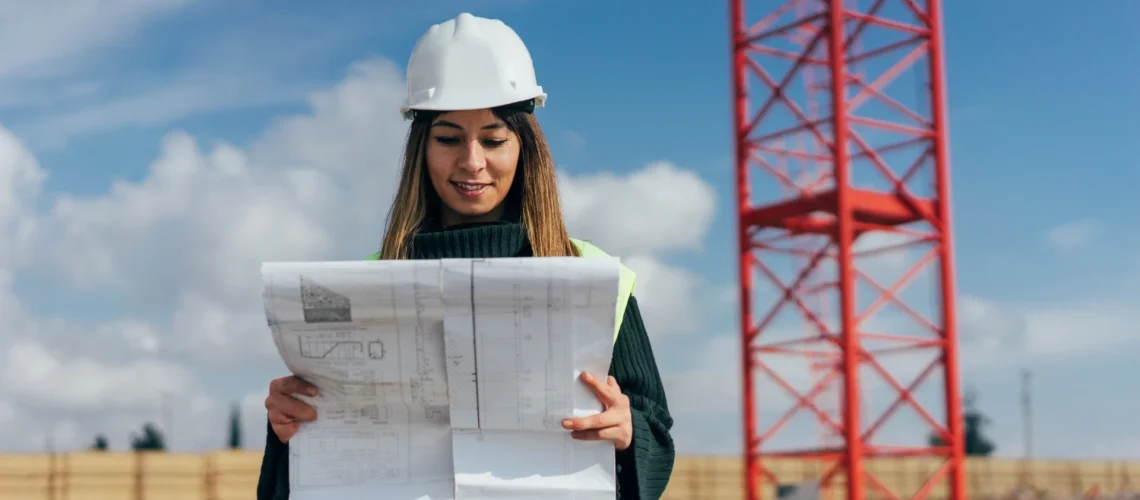Women in the construction industry

Share this post
Women in the construction industry in numbers
When you think of the construction industry, you think of a male-dominated industry, right? It is time to change your mind and think more openly. While the numbers are low, the evolution of women’s inclusion within the industry must be recognized.
The employment of women in the construction industry has fluctuated between 5% and 15% of the total workforce globally over the last 2 decades. The distribution of women throughout the industry is highly skewed, with most of the women employed in administrative and service roles rather than in construction roles.
In Australia, women in the construction industry are under-represented. In 2006, women occupied 17% of the entire construction workforce and dropped to 12% in 2016.
The percentage of construction work held by women is extremely low, between 9–13%, and has remained more or less at the same level over the years, although some countries see a slight increase.
According to the National Association of Women in Construction, in the US the percentage of women working in the construction industry was 8.9% in 2014 and 9.9% in 2018. A smaller but significant rise. For the UK and Australia in 2018, it was respectively 12.5% and 12%.
In 2020, according to BLS, women in construction constituted 10.9% of the entire workforce.
The number of women in construction increases year by year, between 2017 and 2018, it reached a growth of 17.6%. One problem persists: women are under-represented on the site. So how can we remedy this? This is where organizations, associations and programs come in. Even though the numbers are still low, we are confident that this is going to change as the perception of women working on manual works is changing and as the fight for gender equality persists.
How to more include women in the industry?
Over the decades, lots of governmental initiatives and organizations have helped increase the number of women in the industry. These organizations are fighting to include women in the construction industry. In 2022, there is no excuse to not hire women in the sector.
Here is a summary of the organizations and programs existing:
Women Into Construction was a project before becoming an independent not-for-profit organization in January 2015. The project started to address the gender imbalance in construction and the organization works every day to create gender equality in the construction industry.
Women in BIM was founded in 2012 by Rebecca De Cicco, to create a dedicated network for women working in BIM and digital construction.
It is a diverse network of women professionals within the AEC industry dedicated to supporting, empowering, and celebrating women in BIM and digital construction professions and roles.
The development of Building Gender Equality: Victoria’s Women in Construction Strategy 2019-2022. The focus of the strategy is on women in trades and semi-skilled roles who currently make up just 1% of trades and technician positions in the construction industry. The Government has invested 500 000 $ to create a strategy to diversify the male-dominated construction industry with 3 key themes:
- Attract
- Recruit
- Retain
Was founded in 1989 by 4 tradeswomen on the principles that women can attain economic self-sufficiency by pursuing careers in the construction, manufacturing, mechanical, and utility trades while helping the construction industry to build a diverse workforce.
The 4 values of Oregon Tradeswomen are justice, Empowerment, Equity, and integrity.
The NAWIC was founded in 1953 by sixteen women working in the construction industry. The association was created as a support network for women working in construction, and to highlight their success in the industry. To help with that, NAWIC provides education, community, and advocacy for women.
This is just a summary of the numbers of organizations that exist through the world. At GAMMA AR, as a technology working constantly with construction companies, we feel concerned about the inclusion of women in the industry.
We hope you enjoyed our blog post on the evolution of women in the construction industry. While the construction industry is typically a male dominated field, there are many women who are successfully able to integrate themselves into the workforce. If you are a woman working in the construction industry and want to share your story, we would be delighted to hear and share it. Send an email to our Marketing Specialist at laura.bocchibianchi@gamma-ar.com.
About GAMMA AR
GAMMA AR is a Construction App that brings BIM models to the construction site using Augmented Reality. Check out the features of the software and start your 30-day free trial now.
If you have any questions or need support, send us an email at info@gamma-ar.com
